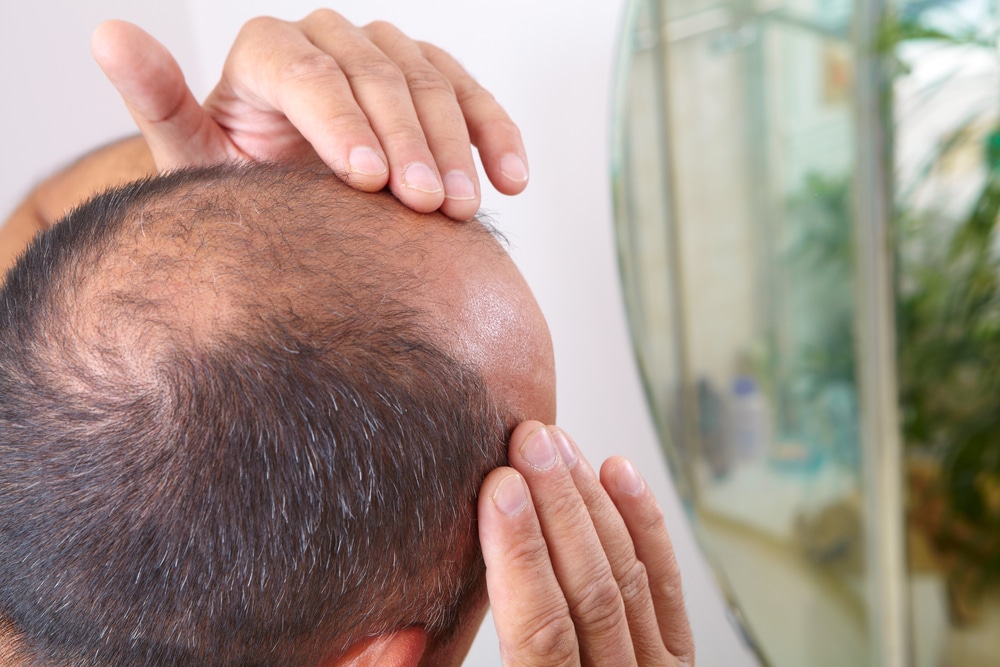When you wake up in the morning, you might apply sunscreen to your face, neck, arms, and more, but are you skipping your scalp? Like other areas of your skin, your scalp can develop melanomas if left unprotected and exposed. But unlike most of the rest of your body, which you can usually cover with clothes or sunscreen, the scalp is harder—but not impossible—to protect.
Learn about the risks of skin cancer on your scalp, how it differs from other types of melanoma, and how you can keep your scalp healthy.
Melanoma on Scalp: How Dangerous Is It?
Skin cancer on the scalp is less common than other types of melanoma, but it can mean more aggressive treatments are needed. The American Academy of Dermatology Association explains that this is due to the complex anatomy of the head, which contains many blood vessels and lymph nodes. As such, melanoma cells are believed to be able to spread easier when they start in this area.
How to Check for Melanoma on Scalp
It's important to check your scalp regularly for changes and signs of skin cancer like raised or pigmented moles, red or scaly patches, asymmetrical or changing spots, and any bleeding or tingling lesions. When doing your monthly at-home skin check, start checking your scalp as well. The Moffitt Cancer Center advises self-examining your scalp using a handheld mirror in a room with good light. The easiest way to do this is to stand in front of a full-length mirror, part small sections of your hair with your fingers, and then angle the handheld mirror into the larger mirror so you can see the back of your head in it. If you find it tricky to do it by yourself, you can ask a family member or your hairstylist to take a look for you. Book an appointment with a board-certified Dermatologist to discuss anything that concerns you.
Risks of Scalp Melanoma
New York City-based board-certified Dermatologist Rachel Maiman, MD, explains that skin cancers on the scalp are more common in people with bald heads. This is because the skin is continuously exposed to harmful UVA and UVB rays while those with hair have greater—but not perfect—protection.
As with all types of melanomas, those with fairer skin and hair tend to be at greater risk as they have less melanin, the protective pigment that defends the skin against UV radiation. And if you part your hair, that exposed skin is at risk for sun damage.
Keeping Your Scalp Protected From the Sun
Your scalp deserves the same level of sun protection as the rest of your skin. The Skin Cancer Foundation recommends a broad-spectrum sunscreen with a minimum SPF of 30. Bonus points if it's water-resistant.
EltaMD UV Sheer Broad-Spectrum SPF 50+ is a good choice thanks to its very lightweight formula, which is ideal for applying to tricky areas like the scalp. When you're applying your sunscreen to your face, work it up into your hairline and into your part. If you're bald, you can spread the sunscreen all over your head—just don't forget the back of your neck and behind your ears.
In addition to sunscreen, you can also protect your scalp with a stylish hat, scarf, or headband. This is a great option on really sunny days, and it will provide your face with additional protection, too.
Forming a Habit
Like all types of sunscreen application, remembering to protect your scalp before you go out to enjoy the sunshine is a habit that may take a little bit of time to instill into your routine. Leave a note on your mirror—perhaps in a place where you style or blow-dry your hair—reminding you to apply sunscreen to your head. Or place your sunscreen next to your morning moisturizer plus keep a travel-sized bottle with you so you can reapply it throughout the day.
Before you know it, protecting your scalp will become as second nature as protecting your face, leaving you with more time to enjoy sunny days in confidence.
